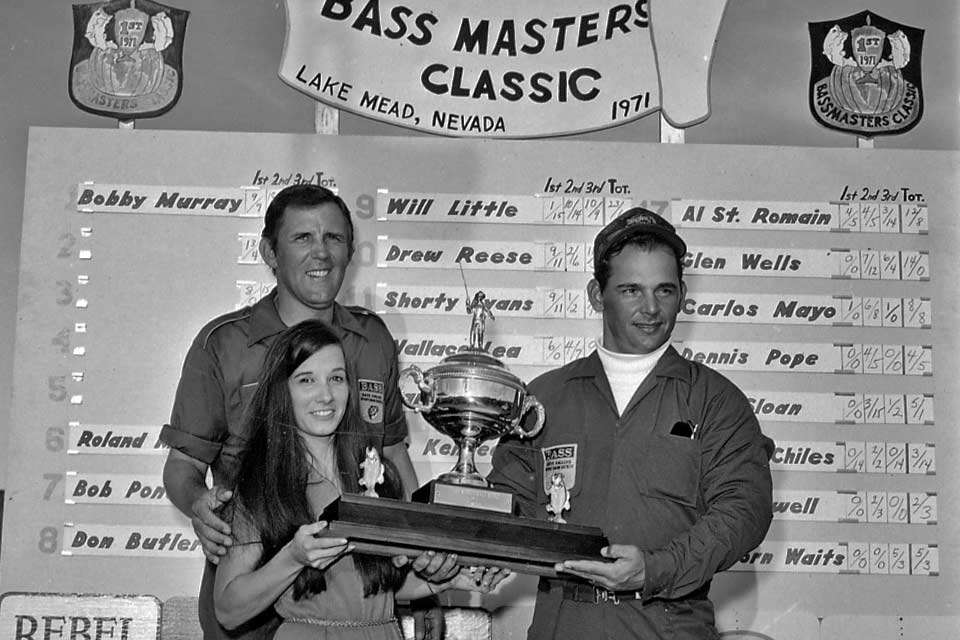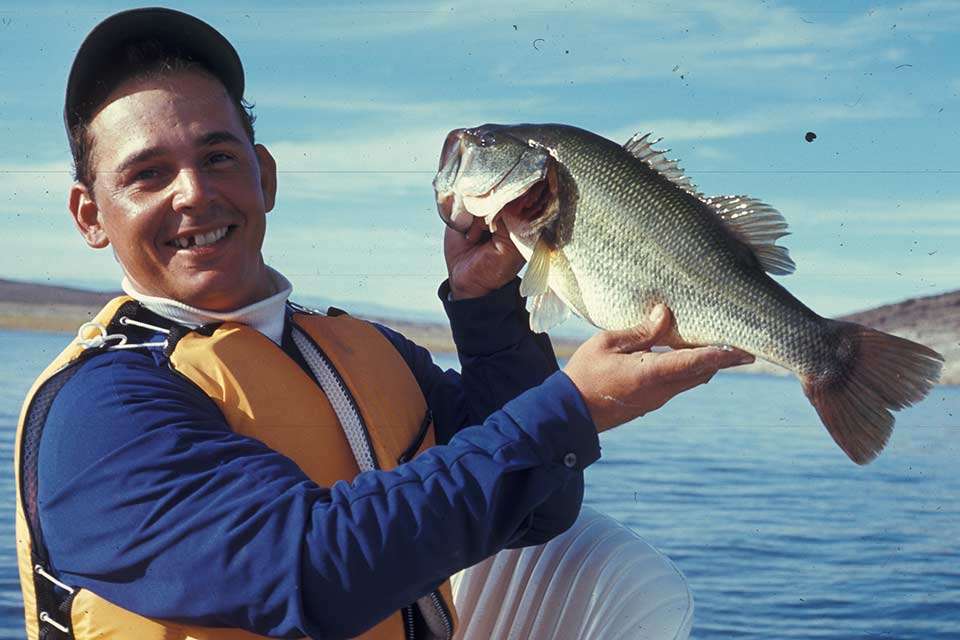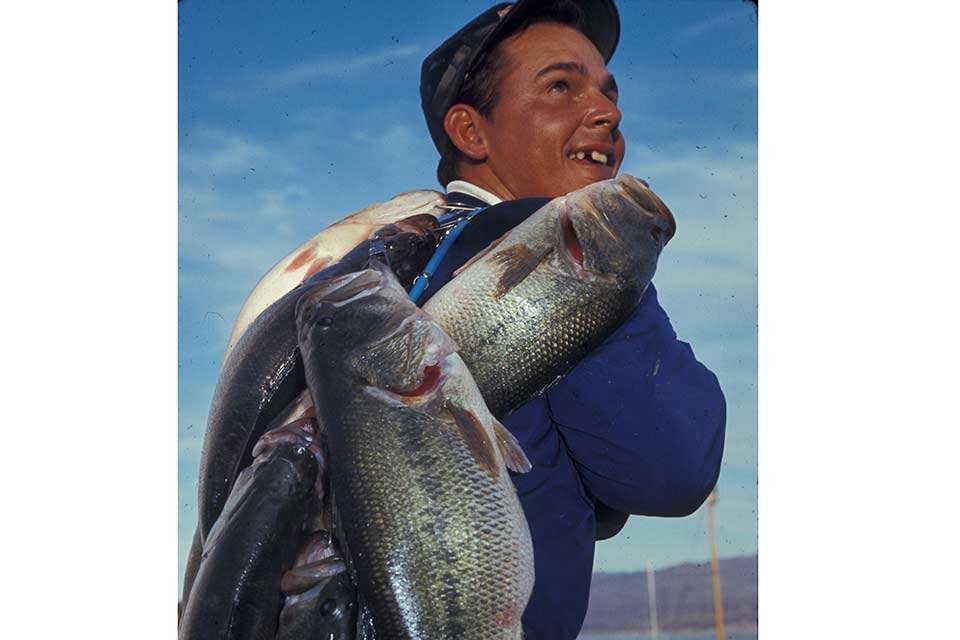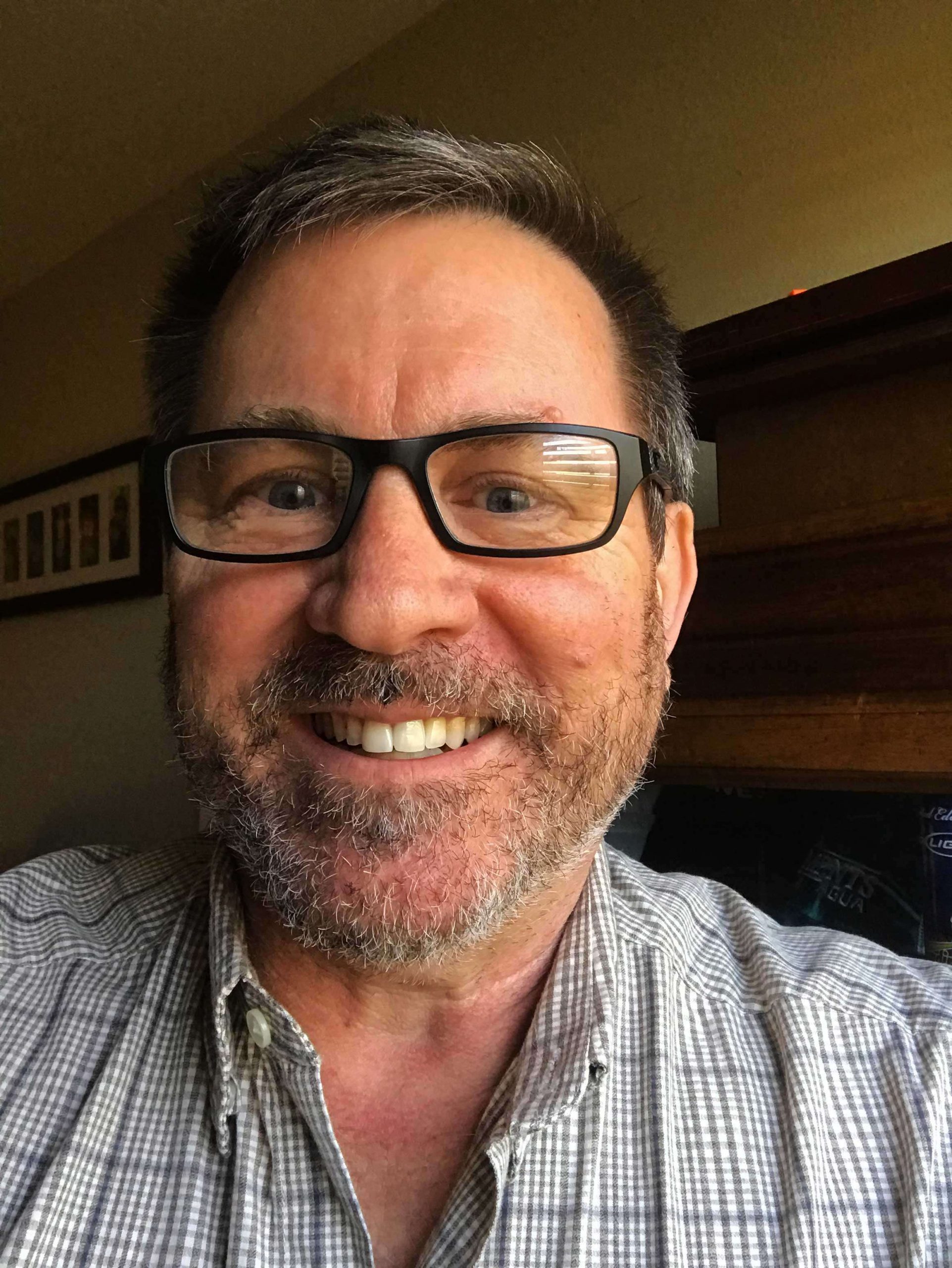
On Oct. 22, 1971, Bobby Murray made more than history — he wrote his ticket in the bass fishing industry.
As the 50th anniversary Academy Sports + Outdoors Bassmaster Classic presented by Huk approaches, Murray spoke about his victory in the first world’s championship on Nevada’s Lake Mead almost 50 years ago.
“Seems like a hundred,” he said. “One thing about being the first of anything, you will always be remembered. In the fishing side, the Classics are everything. The Classic is the epitome of our sport and I feel honored that I kind of helped lay the foundation for that.”
Murray also won the 1978 Classic on Ross Barnett Reservoir and soon after retired from competitive fishing to find great success in various business endeavors in the industry. He said it’s an honor to be introduced as the first Classic champion and one of only six anglers who have won more than one.
“I can take my first Classic ring at a promotion and slide it on somebody’s hand that walked up to the booth and wants a picture taken, you ought to see their face light up,” he said.
That first event didn’t offer much shine, but as the crown jewel of bass fishing gained prominence, what it meant to Murray became golden.
“It gave me an intro to do anything I wanted to do in the business. It opened the door. It didn’t keep the job, but it influenced getting the job,” he said. “I think me and (Rick) Clunn were the only two-time winners for a long time. It for sure is the bedrock of my career.
“At the time, though, it didn’t mean much. You got to realize there was 24 people there and about eight outdoors writers, and that was it. We had the weigh-in on the top of a floating boat dock. It wouldn’t hold 50 people. It’s kind of changed through the years.”
The Classic is the biggest event in the sport. Anglers clamor to qualify, companies vie for prime space in the huge Expo and fans flock from far and wide. Last year at Knoxville saw a record attendance of 153,809 spectators. This year’s site of Lake Guntersville out of Birmingham, Ala., was announced 10 months in advance, giving everyone plenty of time to make plans for the golden celebration.
In 1971, the 24 anglers boarded a plane not knowing where they were heading before learning of Ray Scott’s mystery locale. Murray said each fisherman was allowed four rods, 10 pounds of tackle and only one day of practice.

“It was the only Classic that I think that’s ever been held that not one of the competitors had ever been on the water,” he said. “You get just one practice day in the Classic, and I never had a bite.”
Things changed for him on competition days, however, and he ended up totaling 43 pounds, 11 ounces, although it came slowly. He was used to clear water, fishing around his home in Hot Springs, Ark., but he said the deeper, clearer Lake Mead was a little unnerving at times, too.
“It was a tough bite,” he said. “I remember the first day, I’m driving across Vegas wash out there heading over toward a little area I saw on a map. All the sudden, I’m on a rock pile and I pulled the boat back. I thought I was going to run aground. That rock pile was 22 feet deep. That’s how clear the water was. It was like looking through air. There’s no color to it.”
Murray figured out a pattern that didn’t produce numbers. He said he had a 50-mile ride up Lake Mead to canyons that offered bass just a little shade. Second-place finisher Tom Mann limited each day with his Jelly Worm, but Murray threw his Aggravator Spinnerbait for bigger bites.
“I would just go into a little canyon and if there wasn’t shade there, I’d move on,” he said. “I was just looking for five or six feet of shade. It wasn’t much, but it was just enough for those fish to come and feel comfortable shallow.
“And lightning would strike five times a day, and the quality of fish was a whole bunch better than everybody else was catching with a worm. Tom was catching a bunch of little 12-inch slicks.”
Murray’s win propelled him in the industry as he hosted a show with his twin brother, Billy, then worked as a tackle industry representative and in public relations. He remains widely recognized in bass fishing circles, and after answering some questions about that first title, he had a few of his own.
“You know who won the second Bassmaster Classic?” Murray asked. “Nobody had to think hard about that first one.
“As the years have gone on, it’s meant more and more and more to me. Just think about this, look at the most popular anglers in this country — Bill Dance, Roland Martin, Jimmy Houston — you know how many they have between them? … None. I may not have won as many tournaments as they did, but I proved that I could win the big one.”
That first big one wasn’t much of a windfall compared to today’s $300,000 first-place Classic prize. For his first, Murray received $10,000, which was great in the day.
“Remember what second place was? Nothing. It was win or lose,” he said. “The venues have gotten enormous. You’ve got to realize when B.A.S.S. was in like the dark ages when we first started.”

In Murray’s 66 events with B.A.S.S., he had one other victory. He finished in the top 10 four times in his nine Classic appearances. He also vied for the Bassmaster Angler of the Year title, seven times finishing in the top 10 of the point standings. Murray was in the first class of inductees to the Bass Fishing Hall of Fame in 2001.
In all, Murray earned $75,384.87 in B.A.S.S. tournaments, almost half from his Classics — the winner’s payout jumped to $25,000 in 1978. His career total is less than today’s Elite Series first prize of $100,000.
Why the money and prestige increased is no mystery to Murray, who said the advent of Bassmaster Magazine brought together a nation of bass anglers.
“Everything has changed. There was no Bassmaster Magazine. When Ray brought in Bob Cobb, it became monthly and you started communicating,” he said. “It brought all the anglers across the country together when we got a Bassmaster Magazine. Back then, we read it from cover to cover. Everybody was looking for knowledge. That train just spawned a whole new group of anglers when Bassmaster became monthly and started communicating with everybody.”
Murray first fished a B.A.S.S. event in June of 1969. He had just graduated from college and was guiding on Toledo Bend when he and another angler wanted to see how they stacked up against the pros. Watching Blake Honeycutt set the record with 138 pounds on Alabama’s Lake Eufaula didn’t scare him off. He said he appreciates technology getting better but said there’s no substitute for time on the water.
“We dug it out of the dirt. There was no YouTube. There was no Bassmaster Magazine. There were no depthfinders — we dug it out of the dirt,” he said. “Once you can get where you’re pretty proficient doing that, every little innovation just compounds you’re ability to find them.”
His latest tool, the Garmin Livescope, is a game-changer, Murray said, adding it certainly cuts down time finding schools. He’s spent six hours with it and was amazed that he could see every fish on a ledge in real time. Yet he again espoused time on the water.
“I don’t care who you are, how good you think you are, or how good you want to be, fish more you’ll get better at it,” Murray said. “You’ll learn to read nature’s signs better, how to locate the fish. You’ll quit fishing for singles and start fishing for schools.
“You can’t take a pill and get 10 years experience reading the rain, the clouds, the wind, you’ve got to experience all that. If you want to become a better angler, go more often.”

